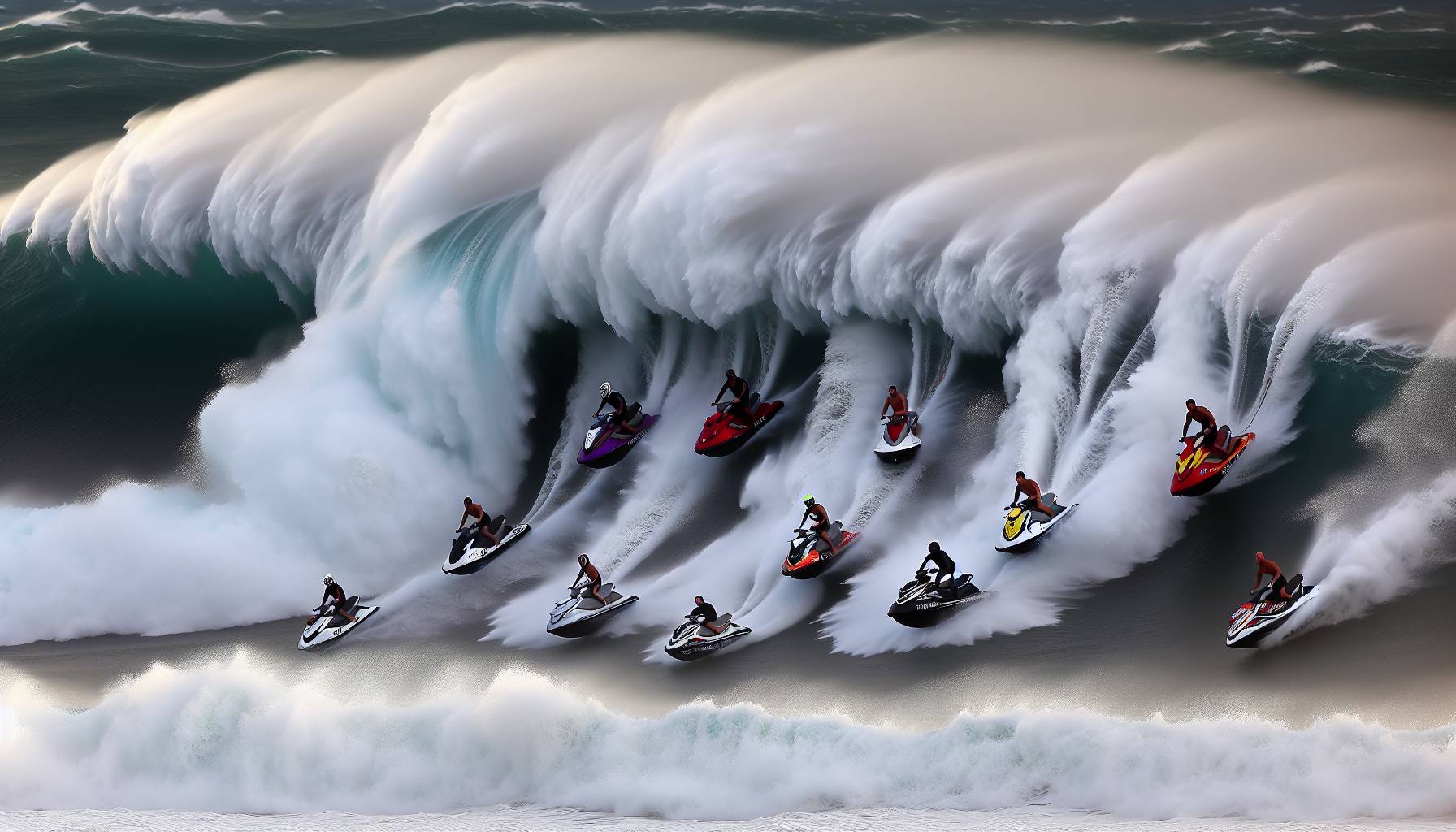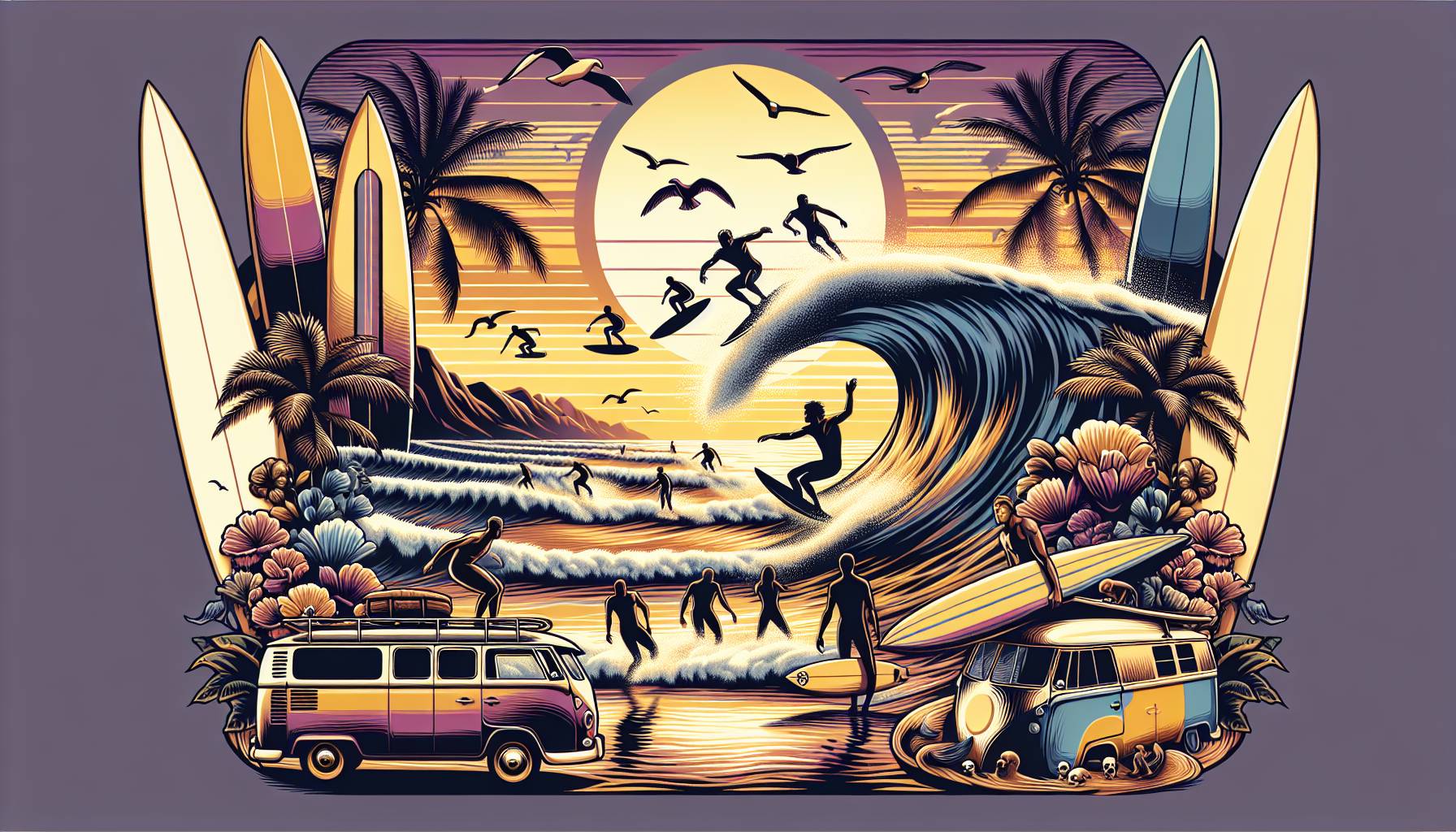
Promoting biodiversity through conservation efforts
Australia’s coastal ecosystems are home to a diverse range of marine and terrestrial species, many of which are under threat due to habitat destruction, pollution, and climate change. Conservation efforts play a crucial role in preserving these ecosystems, ensuring that future generations can continue to enjoy the natural beauty and biodiversity of the country’s shorelines.
One of the key strategies in promoting biodiversity is the restoration of native vegetation along coastal dunes and wetlands. These habitats provide essential shelter and breeding grounds for various species, including shorebirds, reptiles, and small mammals. By replanting native flora and removing invasive species, conservation initiatives help maintain the delicate balance of these ecosystems.
Marine conservation is equally important, particularly in areas frequented by surfers and beachgoers. Protecting coral reefs, seagrass meadows, and mangrove forests supports marine biodiversity and helps sustain fish populations. Initiatives such as marine protected areas and sustainable fishing regulations contribute to the long-term health of these environments.
“Healthy ecosystems lead to healthier waves. Protecting our coastlines ensures that surfers can continue to enjoy pristine waters and thriving marine life.”
Local conservation groups and environmental organisations are actively involved in projects such as beach clean-ups, wildlife monitoring, and habitat restoration. These efforts not only enhance biodiversity but also foster a deeper connection between individuals and the natural world. By participating in these initiatives, surfers and nature enthusiasts can play a direct role in preserving the landscapes they love.
Another critical aspect of conservation is reducing human impact on fragile ecosystems. Simple actions such as minimising plastic waste, respecting wildlife habitats, and supporting eco-friendly businesses contribute to the overall health of coastal environments. By adopting responsible behaviours, individuals can help protect biodiversity while continuing to enjoy the ocean and its surroundings.
Encouraging community engagement with nature
Connecting with nature on a deeper level fosters a sense of responsibility and appreciation for the environment. By engaging in hands-on activities, individuals can develop a stronger bond with the coastal ecosystems they frequent. Community-driven initiatives, such as dune restoration projects and citizen science programs, provide opportunities for people to contribute directly to conservation efforts while learning about the delicate balance of marine and terrestrial habitats.
Surfing communities, in particular, have a unique relationship with the ocean, making them well-positioned to advocate for environmental stewardship. Many local surf clubs and organisations host events that encourage members to take an active role in protecting their surroundings. Activities such as beach clean-ups, tree planting, and educational workshops not only benefit the environment but also strengthen the sense of community among participants.
Outdoor education programs play a crucial role in fostering a connection with nature from an early age. Schools and community groups often collaborate with environmental organisations to offer guided coastal walks, marine life identification sessions, and sustainability workshops. These experiences help individuals understand the importance of preserving biodiversity and inspire them to adopt eco-friendly habits in their daily lives.
“When people feel connected to nature, they are more likely to protect it. Engaging with the environment firsthand fosters a sense of responsibility and appreciation for the ecosystems that sustain us.”
Social media and digital platforms also serve as powerful tools for raising awareness and encouraging participation in conservation efforts. By sharing stories, photos, and updates on environmental initiatives, individuals can inspire others to get involved. Online communities dedicated to sustainability and ocean conservation provide a space for surfers and nature enthusiasts to exchange ideas, organise events, and support one another in their efforts to protect the coastline.
Encouraging community engagement with nature is not just about conservation—it’s about fostering a lifestyle that values and respects the natural world. Whether through volunteering, education, or simply spending more time outdoors, individuals can develop a lasting connection with the environment, ensuring that future generations can continue to enjoy Australia’s stunning coastal landscapes.
Sustainable practices for long-term impact
Ensuring the long-term health of Australia’s coastal ecosystems requires a commitment to sustainable practices that minimise human impact while supporting biodiversity. By adopting eco-friendly habits and promoting responsible behaviours, individuals and communities can contribute to the preservation of these vital environments for future generations.
One of the most effective ways to reduce environmental impact is by embracing sustainable surf gear and apparel. Many surf brands are now producing boards, wetsuits, and accessories using recycled materials, plant-based resins, and eco-friendly manufacturing processes. Choosing products that prioritise sustainability helps reduce waste and pollution while supporting companies that are committed to environmental responsibility.
Reducing plastic waste is another crucial aspect of sustainable coastal living. Single-use plastics, such as water bottles, food wrappers, and packaging, often end up in the ocean, posing a significant threat to marine life. Surfers and beachgoers can make a difference by opting for reusable alternatives, participating in beach clean-ups, and supporting businesses that use biodegradable or plastic-free packaging.
“Every small action adds up. By making conscious choices, we can protect the places we love and ensure they remain pristine for future generations.”
Water conservation and pollution reduction are also key components of sustainable coastal practices. Runoff from urban areas, agricultural activities, and industrial processes can introduce harmful chemicals and pollutants into the ocean, affecting water quality and marine ecosystems. Supporting initiatives that promote clean water, such as stormwater management projects and eco-friendly landscaping, helps mitigate these impacts.
Eco-conscious travel and transportation choices can further reduce environmental footprints. Carpooling to surf spots, using public transport, or opting for bicycles instead of cars can lower carbon emissions and decrease congestion in coastal areas. Additionally, staying at eco-friendly accommodations and supporting sustainable tourism initiatives ensures that local communities benefit from responsible travel practices.
Engaging with local conservation programs and advocating for sustainable policies can amplify individual efforts. Many organisations work to protect marine environments through habitat restoration, wildlife monitoring, and policy advocacy. By volunteering, donating, or simply spreading awareness, individuals can contribute to broader conservation goals and help shape a more sustainable future for Australia’s coastlines.
By integrating sustainable practices into daily life, surfers and nature enthusiasts can play a vital role in preserving the beauty and biodiversity of Australia’s coastal environments. Small, mindful actions—whether choosing eco-friendly products, reducing waste, or supporting conservation initiatives—can collectively make a significant impact, ensuring that the ocean and its surrounding ecosystems remain vibrant and thriving for years to come.
Promoting biodiversity through conservation efforts
Alright, legends, let’s talk about keeping our backyard wild and thriving. This initiative isn’t just about planting a few trees and calling it a day—it’s about making sure our coastlines, reefs, and bushlands stay full of life for generations to come.
From restoring native habitats to protecting endangered species, the focus is on giving nature a fighting chance. Think of it like fixing up your favourite surf break—if you don’t look after it, the waves (and the fish) won’t be the same. Conservation teams are working hard to bring back native plants, clean up waterways, and create safe spaces for wildlife to flourish.
One of the biggest moves? Tackling invasive species that throw the whole ecosystem out of whack. Whether it’s feral pests on land or aggressive marine invaders, these troublemakers are being shown the door so native species can thrive again.
“Healthy ecosystems mean better fishing, cleaner waves, and more epic adventures in the wild.”
And let’s not forget the ocean. Protecting marine biodiversity means safeguarding coral reefs, seagrass meadows, and fish populations. More fish in the water? That’s a win for everyone—especially if you love casting a line at sunrise.
So, whether you’re paddling out for a dawn session or trekking through the bush, these conservation efforts are making sure nature stays as wild and free as it should be. After all, what’s an adventure without a bit of untamed beauty?
Encouraging personal connections with nature
Alright, mates, let’s talk about getting back to nature—not just looking at it from a distance, but really diving in, feet first. This initiative isn’t just about saving the environment; it’s about making sure we all feel a part of it. Because let’s be real—nothing beats the feeling of salt on your skin, sand between your toes, and the sound of the bush waking up at sunrise.
One of the best ways to reconnect? Get amongst it. Whether it’s surfing a remote break, casting a line in a quiet estuary, or hiking through the hinterland, the goal is to inspire more people to step outside and soak it all in. The more time you spend in nature, the more you appreciate it—and the more you’ll want to protect it.
Community events are popping up to help people rediscover the wild. Guided bushwalks, citizen science projects, and even beach clean-ups are giving everyone a chance to get involved. It’s not just about doing good—it’s about having a yarn with like-minded legends and sharing a few laughs along the way.
“The more you connect with nature, the more it becomes a part of who you are—like knowing the perfect tide for your favourite break.”
And let’s not forget the young groms. Getting kids off screens and into the great outdoors is a big part of the plan. Schools and local groups are running programs to teach the next generation about the land, the ocean, and everything in between. Because if they grow up loving it, they’ll fight to protect it.
So, whether it’s paddling out at first light, spotting a sea eagle on a coastal hike, or just taking a moment to breathe in that fresh ocean air, this initiative is all about making sure we stay connected to the wild places that make Australia so special. After all, life’s better when you’re out there living it.

